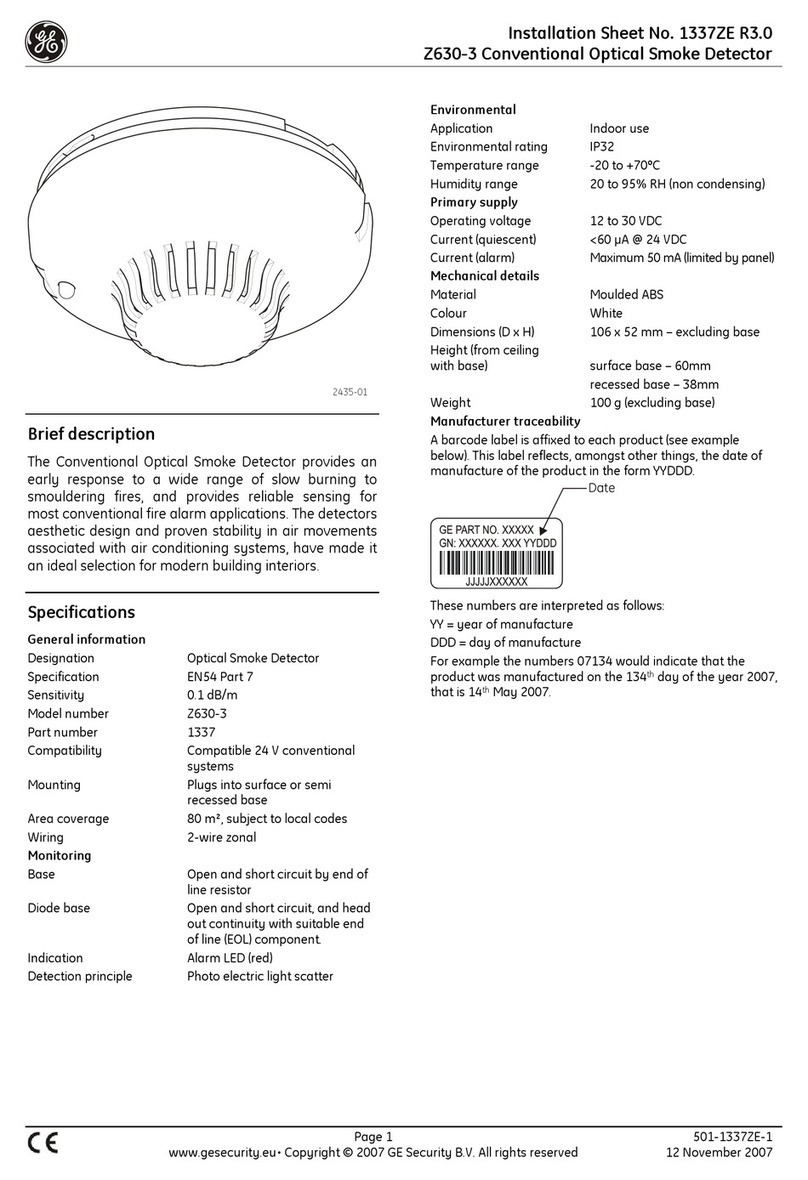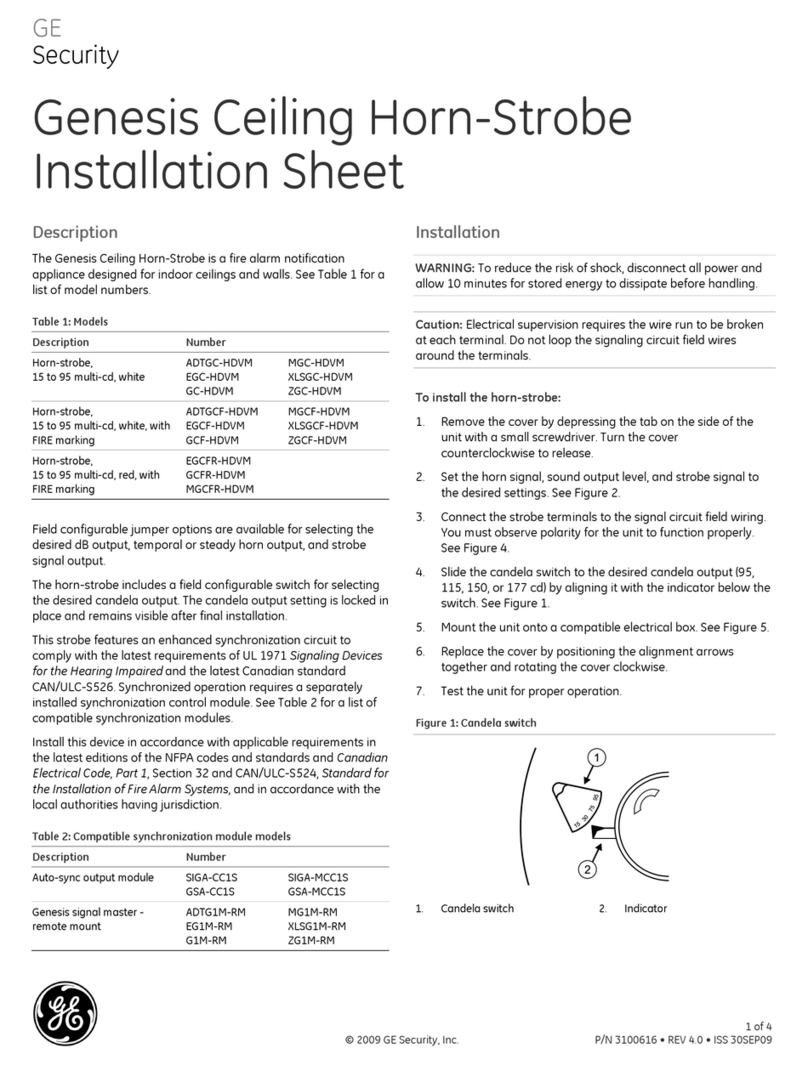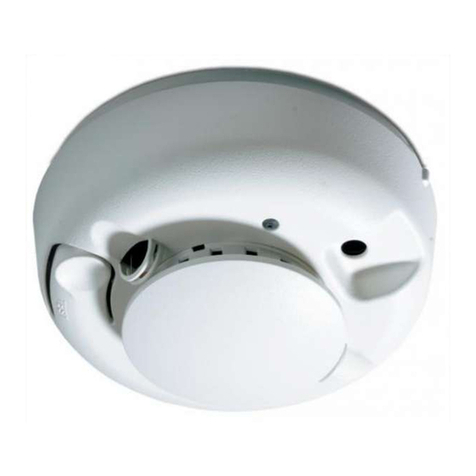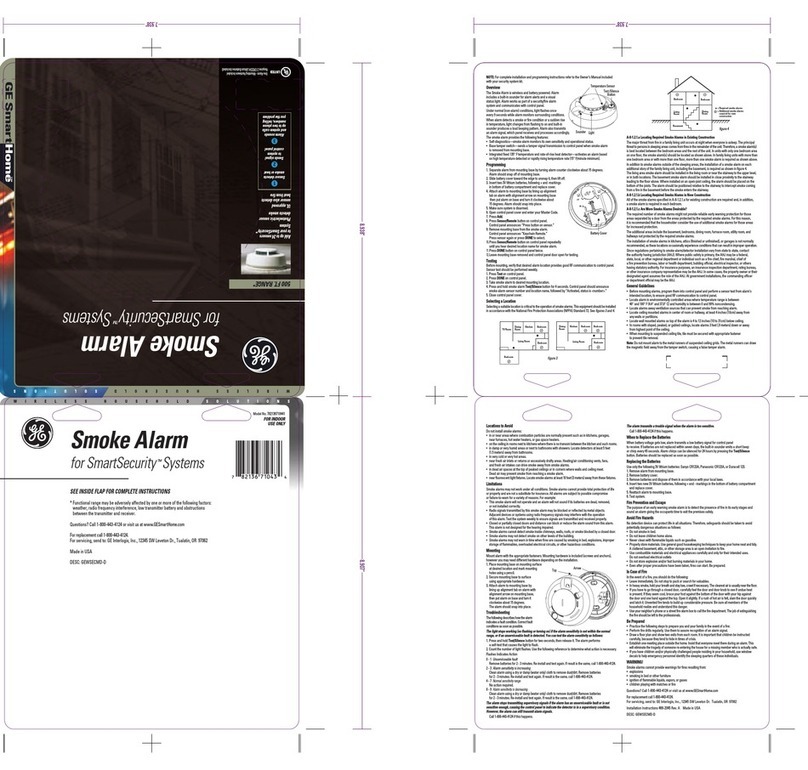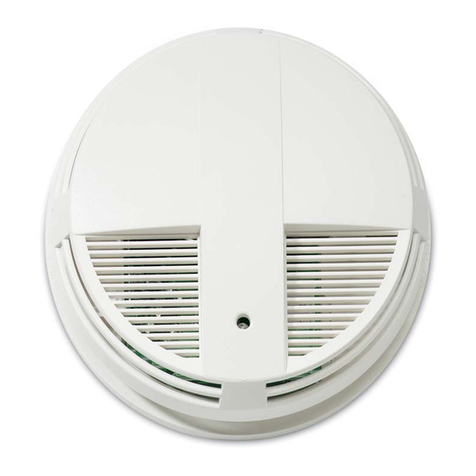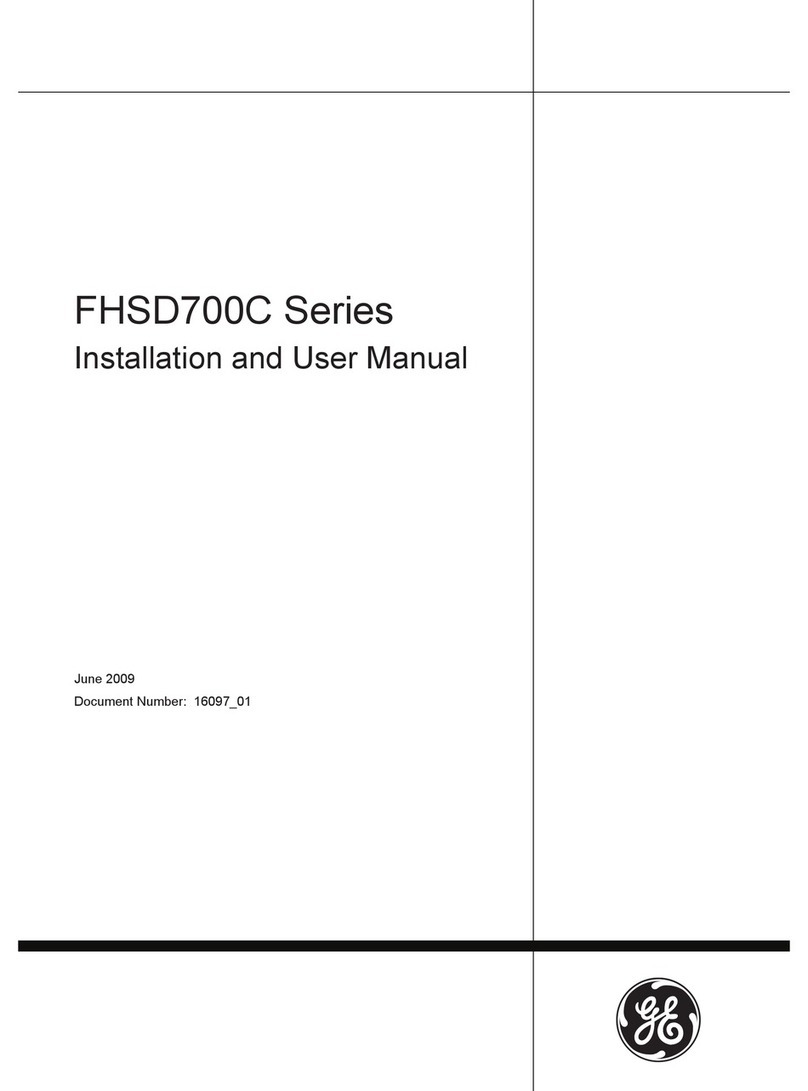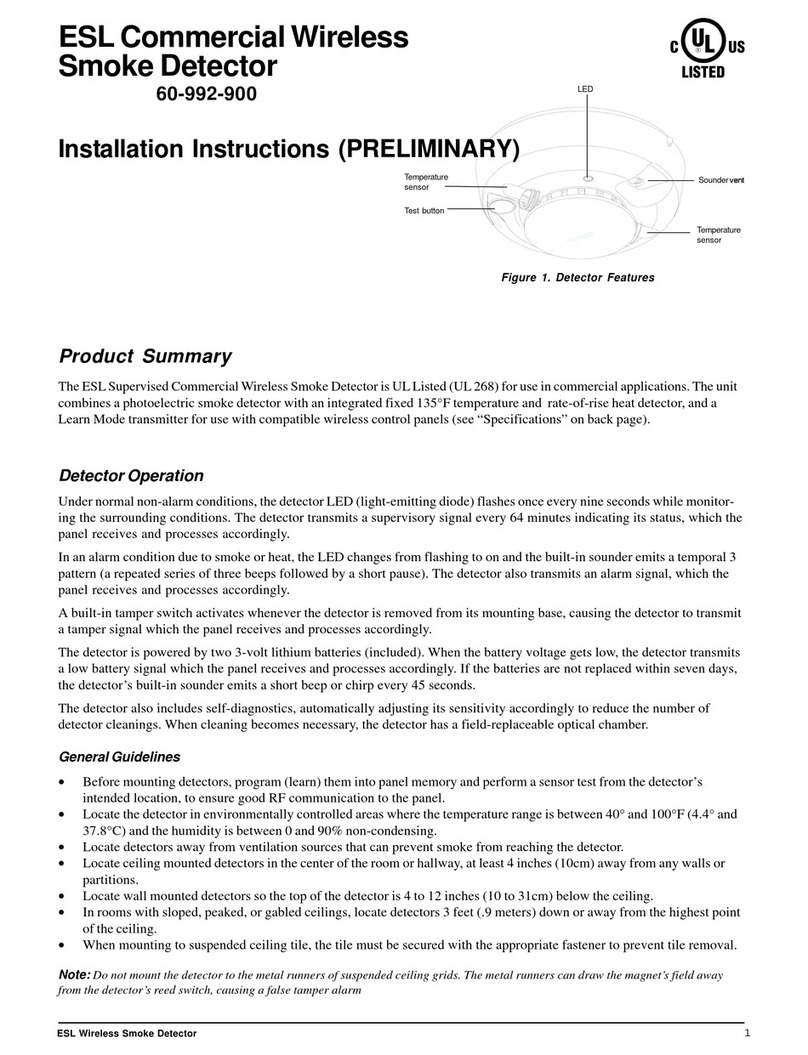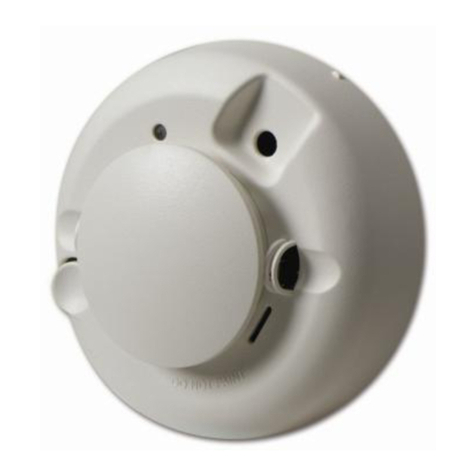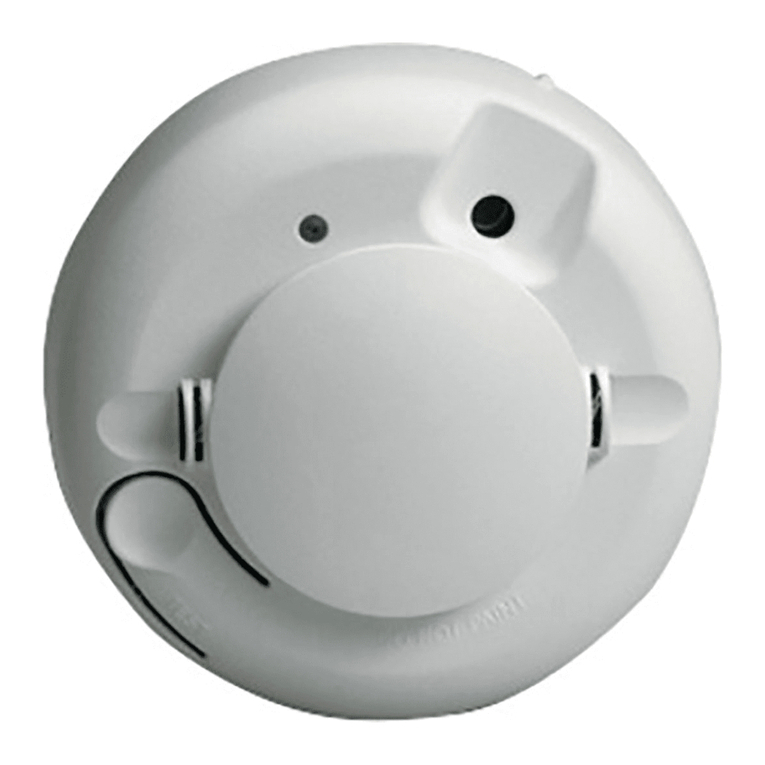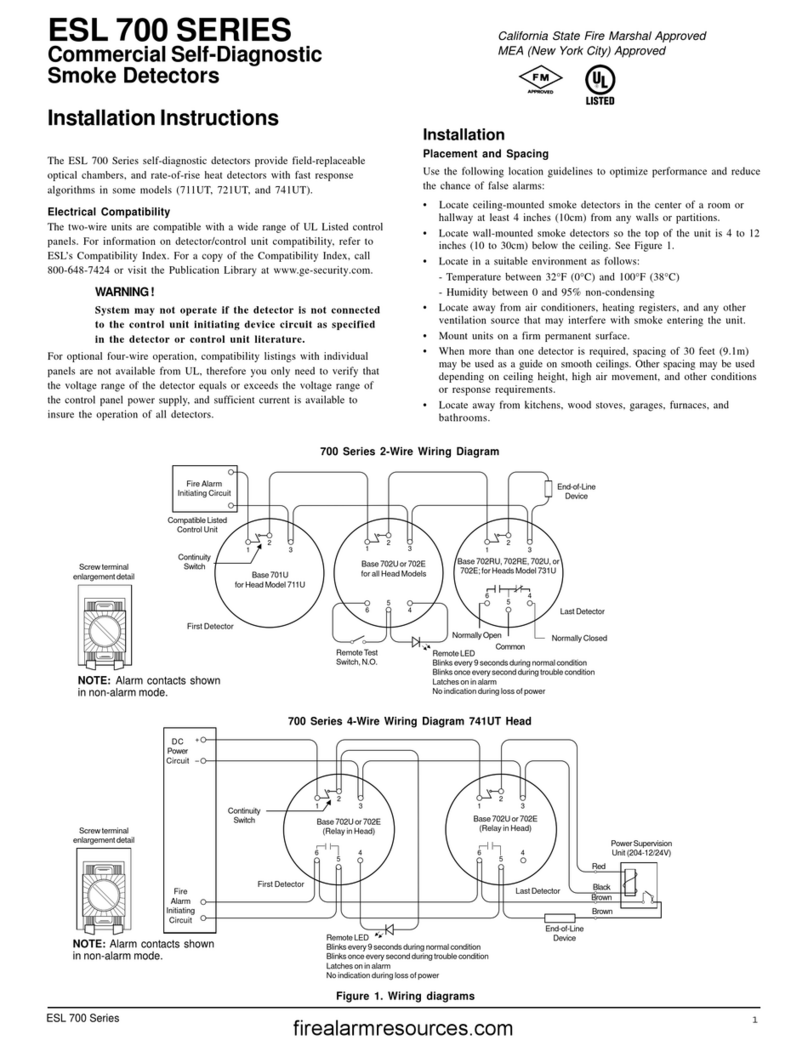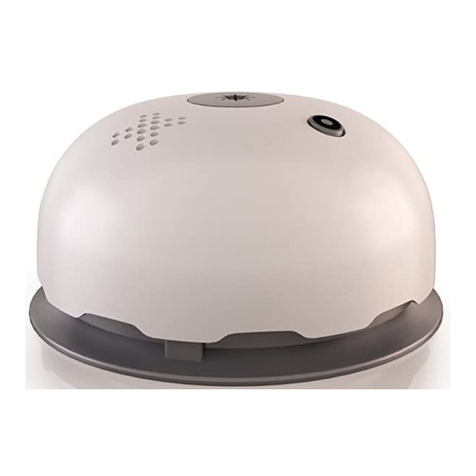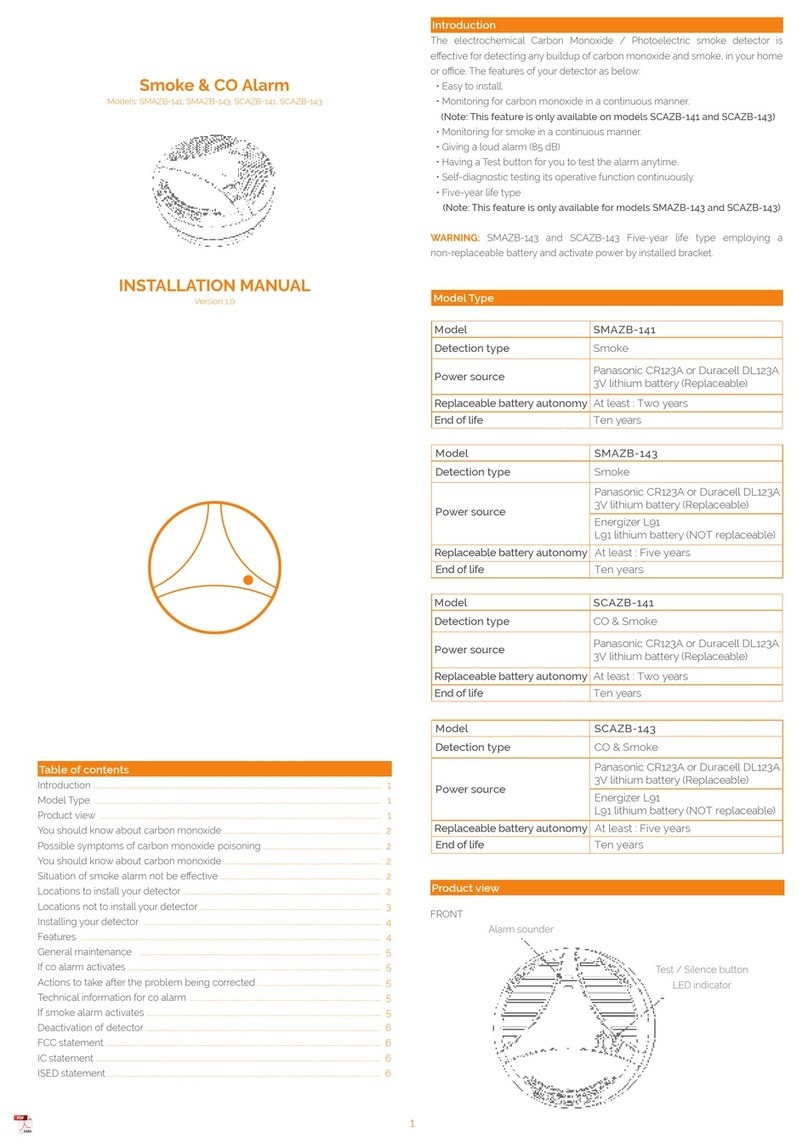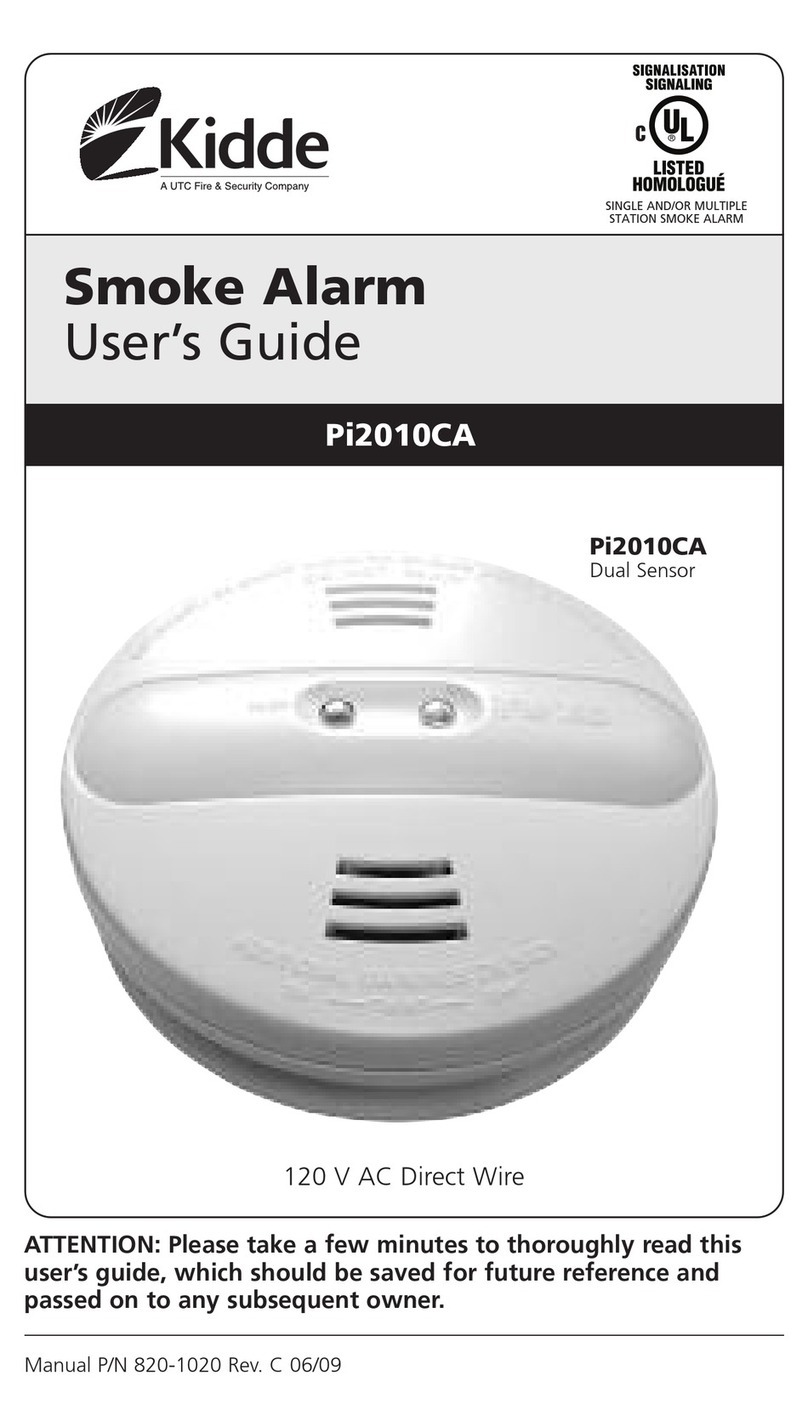
2ESL 572NS Smoke Detector
Installing the Detector
1. Slide the battery compartment cover away from the detector
to unsnap it and lift it off. See Figure 3.
2. Observing proper polarity, insert two 3Vlithium batteries into
the detector battery compartment and replace the battery
compartment cover.
3. Locate and record the seven digit ID address from the
transmitter and program it into the RF gateway receiver and
control panel. See the control panel programming guide.
4. Remove the red plastic dust cover from the detector. The
detector is shipped with a dust cover for protection on
construction sites with dusty environments.
5. Ifapplicable, disconnect the alarm notification appliances,
service release devices and extinguishing systems and test the
NFPA Guidelines
NFPA 72, 2-1.4.2.1 Total (Complete) Coverage. If required,
total coverage shall include all rooms, halls, storage areas,
basements, attics, lofts, spaces above suspended ceilings, and
other subdivisions and accessible spaces; and the inside of all
closets, elevator shafts, enclosed stairways, dumbwaiter
shafts, and chutes. Inaccessible areas shall not be required to
be protected by detectors. (For exceptions, refer to this section
ofNFPA72.)
NFPA 72, 2-1.4.2.2 Partial Coverage. If required, partial
detection systems shall be provided in all common areas and
work spaces, such as corridors, lobbies, storage rooms,
equipment rooms, and other tenantless spaces in those
environments suitable for proper detector operation in accor-
dance with this code.
NFPA 72, 2-1.4.2.3 Selective Coverage. Where codes,
standards, laws, or authorities having jurisdiction require the
protection of selected areas only, the specified areas shall be
protected in accordance with this code.
NFPA 72, 2-1.4.2.4 Supplementary (Non required) Coverage.
Where installed, detection that is not required by an applicable
law, code, or standard, whether total (complete), partial, or
selective coverage, shall conform to the requirements of this
code. (For exceptions, refer to NFPA72 Chapter 2 Spacing
Requirements.)
NFPA 72, 2-1.4.3 Where non required detection devices are
installed for a specific hazard, additional non required
Locations toAvoid
Do not install smoke alarms/detectors:
•in or near areas where combustion particles are normally
present such as in kitchens, garages, near furnaces, hot
water heaters, or gas space heaters.
•on the ceiling in rooms next to kitchens where there is no
transom between the kitchen and such rooms.
•in damp or very humid areas or next to bathrooms with
showers. Locate detectors at least 5 feet (1.5 meters) away
from bathrooms.
•in very cold or very hot areas.
•in dusty, dirty, or insect infested areas.
•near fresh air inlets or returns or excessively drafty areas.
Heating/air conditioning vents, fans, and fresh air intakes
can drive smoke away from smoke alarms/detectors.
•in dead air spaces at the top of peaked ceilings or in
corners where walls and ceiling meet. Dead air may
prevent smoke from reaching a smoke alarm/detector.
•near fluorescent light fixtures. Locate smoke alarms/
detectors at least 10 feet (3 meters) away from these
fixtures.
H a l l
O f f i c e O f f i c e
C o n f e r e n c e R o o m
C l o s e t
E l e v a t o r
M e n s L a d i e s
O f f i c e
O f f i c e
O f f i c e
S t a i r w e l l
I n c o m m e r c i a l b u i l d i n g s a s m o k e d e t e c t o r
s h o u l d b e l o c a t e d i n e a c h r o o m .
H
A s m o k e d e t e c t o r
s h o u l d b e l o c a t e d
o n e a c h l e v e l .
O f f i c e O f f i c e
L o b b y
H a l l
O f f i c e O f f i c e
S t a i r w e l l
H a l l
detection devices shall not be required to be installed
throughout an entire room or building.
NFPA 72, 2-2 Heat-Sensing Fire Detectors Heat-sensing fire
detectors shall be installed in all areas where required by the
NFPA codes and standards or by the authority having
jurisdiction.
NFPA 72, 8-1.4.1.3.2 Detection in New Apartment Buildings
Approved, single-station smoke alarms shall be installed in
accordance with 7-6.2.10 of NFPA101 outside every sleeping
area in the immediate vicinity of the bedrooms and on all
levels of the dwelling unit including basements. (101: 18-
3.4.4.2) (For exceptions, refer to this section of NFPA72.)
NFPA 72, 8-1.4.1.4.2 Detection in Existing Apartment
Buildings Approved, single-station smoke alarms shall be
installed in accordance with 7-6.2.10 of NFPA101 outside
every sleeping area in the immediate vicinity of the bedrooms
and on all levels of the dwelling unit including basements.
(101: 19-3.4.4.1) (For exceptions, refer to this section of NFPA
72.)
Figure 2 - Smoke Detector Placement
I n m u l t i f a m i l y d w e l l i n g s , s m o k e a l a r m s / d e t e c t o r s s h o u l d
b e l o c a t e d i n h a l l w a y s a n d s t a i r w e l l s o f e a c h l e v e l .
F i r s t F l o o r
S t a i r w e l l
S e c o n d F l o o r
T h i r d F l o o r
H a l l
A p a r t m e n t
S t a i r w e l l
E l e v a t o r
A p a r t m e n t
A p a r t m e n t A p a r t m e n t
A p a r t m e n t
A p a r t m e n t
m o k e a l a r m s / d e t e c t o r s s h o u l d b e l o c a t e d i n t h e l i v i n
a r e a , h a l l w a
, a n d i n e a c h b e d r o o m o f t h e a p a r t m e n t .
L i v i n
R o o m
B e d r o o m
B e d r o o m
D i n i n
R o o m K i t c h e n
H
B a t h r o o m
C l o s e t
C l o s e t
C l o s e t
B e d r o o m
B e d r o o m
K i t c h e n
H
B a t h r o o m
C l o s e t
C l o s e t
C l o s e t
D i n i n
A r e a
L i v i n
R o o m
B e d r o o m
B a t h r o o m
C l o s e t
E l e v a t o r
